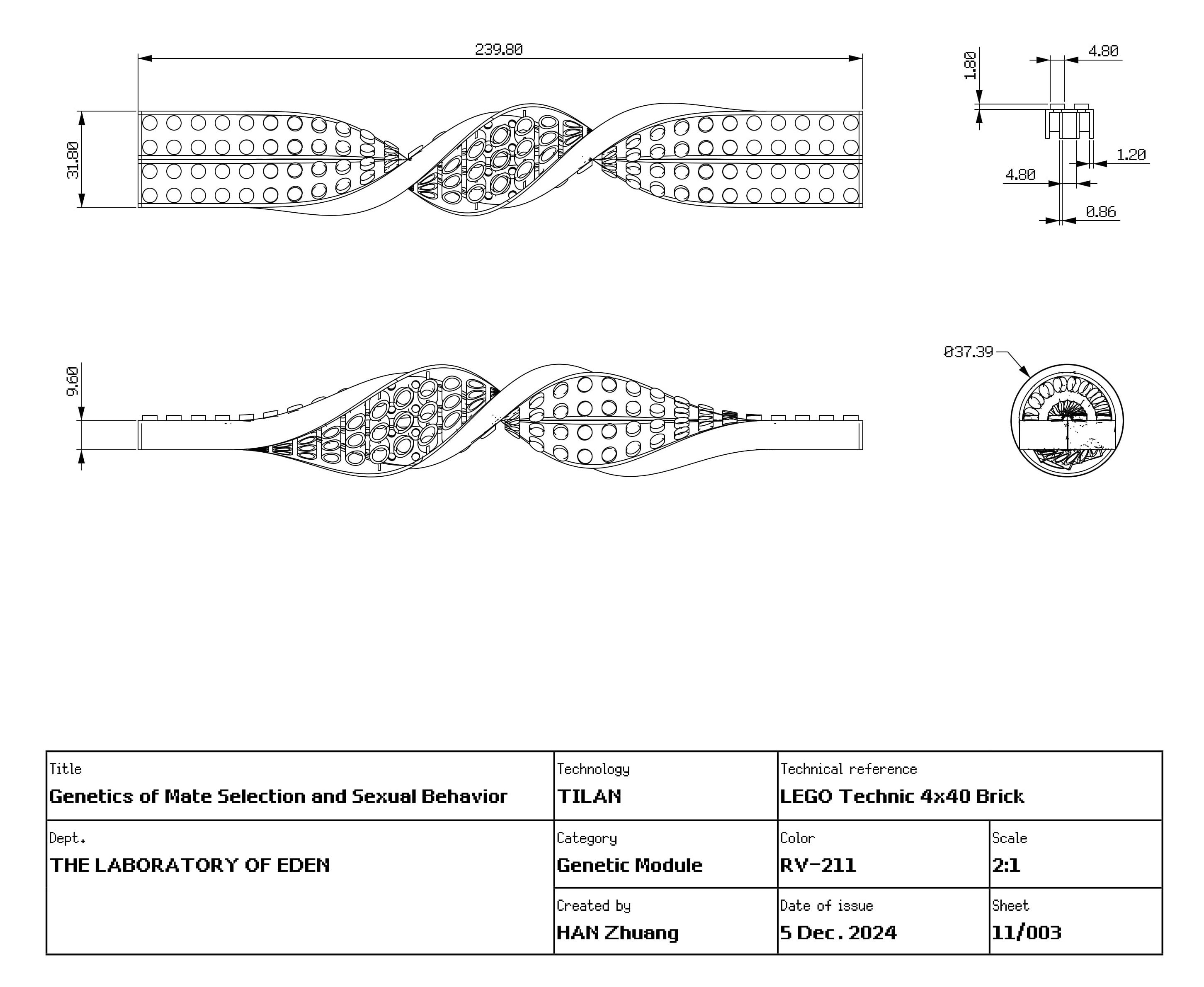Laboratory Background and Analysis
According to Eden Laboratory’s comprehensive analysis of the client’s genetic profile, research has focused on key genetic pathways involved in brain sex differentiation, regulation of sexual behavior, and mate selection ability. The results indicate that the client’s genome retains activity in the Fucose Mutarotase (FucM) gene, which is typically associated with sexual behavior and olfactory responses.
Studies suggest that the FucM gene may heighten the client’s olfactory attraction to the urine of other male wolves, while potentially contributing to limitations in mate selection and natural mating ability with females.

Key Genetic Markers and Functions
| Genetic Marker | Genotype | Functional Description | Behavioral Manifestation |
|---|---|---|---|
| rs71434620 | AG | Moderate regulation of sugar metabolism, impacting the secretion and modulation of sex hormones, thereby influencing the stability and diversity of sexual behavior expression. | Displays olfactory attraction to male urine, while reducing natural mating capability with female partners. |
| rs10445525 | TT | Associated with significant changes in sexual behavior differentiation, potentially involving extreme sexual preferences or social behavior abnormalities. | May lead to changes in sexual preferences, characterized by reduced natural interest in mating with the opposite sex, along with asymmetry in the regulation of sexual behavior. |
Biological Parental Genetic Contribution
| Biological Parents | Genotype and Behavioral Analysis |
|---|---|
| Biological Father | Analysis reveals that the biological father carries variations associated with excessive alcohol dependency and impaired sex hormone regulation. These genetic factors may contribute to a diminished capacity for autonomous selection of female mates. |
| Biological Mother | DNA analysis of the biological mother identifies 37 X-chromosome markers linked to enhanced abilities in selecting opposite-sex partners. However, this trait has not been fully autonomously expressed in the genetic makeup of the next generation of wolves. |
Laboratory Model and Behavioral Manifestations
Regulation of Brain Sexual Differentiation
- The FucM gene significantly impacts the process of brain sexual differentiation, influencing sexual behavior patterns and mate selection.
Epigenetic Regulation
- Environmental and social behaviors do not appear to significantly influence the expression of sex hormone-regulating genes, indicating no further adjustments to sexual preferences or behavior patterns via epigenetic mechanisms.
Behavioral Manifestations
- The client demonstrates enhanced olfactory attraction to male urine while exhibiting signs of withdrawal or reduced initiative in selecting and engaging with opposite-sex mates.
Laboratory Recommendations and Next-Life Parent Matching
| Matching Direction | Recommended Parental Traits | Genetic Optimization Goals |
|---|---|---|
| Next-Life Father Traits | Match a father with highly efficient sex hormone regulation abilities to reduce asymmetry in sexual behavior preferences. | Enhance adaptability in gender-specific behaviors and minimize deviations in sexual preferences. |
| Next-Life Mother Traits | Match a mother with X chromosome markers associated with enhanced emotional support. | Mate selection capabilities to optimize the client’s mate selection abilities and stabilize sexual behaviors. |
| Genetic Optimization Focus | Utilize TILAN technology to regulate the expression of the FucM gene to balance sexual preferences and enhance mate selection abilities for opposite-sex partners. | Provide emotional and behavioral support by simulating natural environments for mate interaction. Optimize sexual behavior patterns and stabilize mate selection mechanisms. |
Laboratory Conclusions and Research Directions
Laboratory Conclusions
- The client’s sexual behavior patterns and mate selection abilities result from the complex interplay of genetics and environmental factors. The active state of the FucM gene plays a critical role in brain sexual differentiation and mate selection abilities, while variations in sex hormone regulatory genes further impact the stability of gender-specific behaviors. Through Eden Laboratory’s precise analysis and matching recommendations, the client’s next life can benefit from an improved genetic foundation and behavioral support to achieve optimized sexual behavior and autonomous mate selection.
Research Directions
- Interaction Between Gender Behavior and Genetics: Conduct in-depth research on the long-term impacts of sex hormone regulatory genes and the FucM gene on sexual behavior patterns and mate selection. Explore methods to adjust asymmetrical sexual behaviors through epigenetic interventions.
- Behavioral Adaptation and Optimization: Investigate ways to enhance autonomy in mate selection through the interaction of genetics and environmental factors, thereby optimizing the balance and adaptability of gender-specific behaviors.